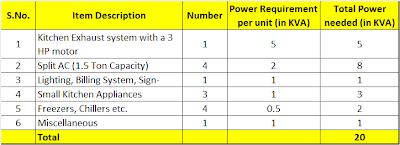Why do a lot of people have a fascination with the Restaurant Business?

There
seems to be something fascinating about owning and running a
restaurant, a coffee shop, or even a really small business in the food
industry. It is probably something like getting attracted to the
opposite sex. A large number of people are infatuated towards the
restaurant business, and by the law of averages, a small percentage of
them actually end up doing something about their infatuation.
Why does this fascination/infatuation happen?
Reason 1: Everyone Understands this Business
Cricket
– The unofficial national game of India, evokes significant emotions
both when we play and when we watch India play. Almost everyone in India
plays cricket or strongly believes that he or she knows how to play
cricket. While watching from the dugout or on TV, you feel that your
team member batting in the centre is not playing the shots he should and
you feel you should be there whacking the ball around or telling him
how to play. But when you go out to play, you end up struggling the same
way as your team-mate or even worse.
I met
with a seasoned professional in the investment banking space and one of
her statements really caught my attention. We were talking about a
specific restaurant "Biryani Merchant" that was set up in Bangalore a
few years ago. The restaurant shut shop after about a year in operation.
She told me that service in that restaurant was really bad and that was
the reason they shut down. Though I quickly wanted to ask her how many
times she had visited the place and on what basis she was making such a
strong statement with so much conviction, I wanted to be nice. But my
guess would be "Once" or maybe 2 or 3 times at best.
Almost
all of us have visited a lot of restaurants over the last several
years. We all have opinions about what is good and bad in any restaurant
we visit and what needs to be done to fix the restaurant. This repeated
exposure to the business as a customer leads us to believe that we
understand the business and what works. Add to this, the age old adage
that “If you understand the customer needs and fulfill them, your
business will be very successful”.
Reason 2: The Restaurant business seems very successful a.k.a profitable
Most
restaurants we visit are typically crowded whenever we visit them – it
is another matter that we mostly visit restaurants during weekends or
the same times when everyone visits the restaurants. We also typically
visit restaurants that are good, recommended by others and the ones we
like. Most of these businesses have typically figured out the basics of
the business and tend to be operationally profitable. But given our
incorrect sampling (even if we have visited over 100 places, most of the
100 end up belonging to the same sample set), we tend to intrinsically
believe that all restaurant businesses are very profitable.
Now
you have an easy formula – I understand the customer need, the business
seems very profitable – let me get into it and make some money and
become famous.
Reason 3: Low Entry Barriers
Starting
a restaurant business has very little entry barriers. The only real
barrier is having some cash to invest. Most people end up saving enough
money over a decade or so to be able to invest in a restaurant if they
have a real interest. In a number of cases, a few like minded friends
are willing to chip in with some money for you to play around with.
Reason 4: The Cool Quotient
Owning
a restaurant seems to evoke certain emotions, which make you feel
really good and proud – you are probably considered “Cool”. Maybe it is
about having a popular place everyone knows about, a place where you can
invite friends and contacts and show them a good time. Visiting a
restaurant is a “Feel Good” experience for customers – the restaurant is
typically filled with positive vibes – the business in general evokes
only positive emotions. I believe this is one of the big reasons for a
lot of people to get infatuated with the business.
Reason 5: Advice from Successful people & I can work hard
Once
you have an initial interest, you talk to a few restaurant business
owners – typically the owners of the restaurants you frequent
(essentially from the same sample set above of restaurants which are
successful and have figured out the basics of the business). In general,
we tend to talk to successful people for advice, the media writes about
success stories that we read. The unsuccessful people like to forget
their bad experiences and move on – so they don’t really want to talk
about it or build associations with their unsuccessful efforts. I am
firm believer that “Success breeds success and confidence”. So when you
talk to successful people, they tend to encourage you and indirectly
push to take the leap.
The only real negative
thing that successful restaurant business owners will tell you is that
it will be a lot of hard work. Even when they tell you this explicitly,
we tend to feel that if others can do it, I can – so you really don’t
assess how much hard work setting up and running a restaurant business
is, compared to most other businesses.
So
what you have is a cool profitable business that is easy to understand –
so you get infatuated. And then if you have the money and the time, you
jump into it. Now isn’t the world becoming very analytical where we try
and make every decision very rationally after diligently evaluating the
pros and cons? So when you are putting your life, your career and your
money on the line for starting a restaurant business, why aren’t we
rational about the decision making process and the approach we take?




